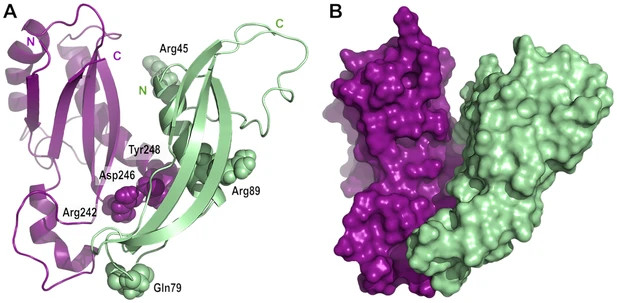

28/09/2020
Looking for new antibiotics is particularly urgent to improve and protect global health. However, this is a challenging and complicated task which requires increasing our understanding of the mechanisms that are required for bacterial growth and survival. The bacterial cell envelope in particular appears to be an attractive target for new antibiotics.
The team of J-Francois Collet recently published an important study in eLife, a journal inspired by prestigious international institutions such as the Wellcome Trust, Max Planck and the H.H.M.I. In this article, Collet and colleagues demonstrated that OmpA, one of the main components of the Escherichia coli envelope, modulates the activity of the Rcs stress response. In addition, this work clarifies the role of OmpA in the surface exposure of the lipoprotein RcsF. Altogether, the data reported in this article bring important new insight into how bacteria monitor the state of their cell envelope.
 |
| Model of the complex between RcsF and the C-terminal domain of OmpA. A) Cartoon and (B) surface representation of a complex between RcsF (colored in light green) and OmpA (colored in purple). This model, which shows a good surface complementarity between the two proteins, was obtained by protein-protein docking with constraints from the crosslinking experiments and further refined by all-atom molecular dynamics (50 ns). The N-terminal residue of RcsF points out in the same direction as the extremities of the periplasmic domain of OmpA, that is toward the OM, and this binding mode is compatible with the interaction of the periplasmic domain of OmpA with the peptidoglycan. |
Article describing this research
Defining the function of OmpA in the Rcs stress response
Dekoninck K., Létoquart J., Laguri C., Demange P, Bevernaegie R., Simorre J-P., Dehu O., Iorga B.I., Elias B., Cho S-H., Collet J.F.
Elife (2020), 9:e60861 .
Funding
This work was supported by grants from the WELBIO (a Wallonia interuniversity research institute), from the Actions de Recherche Concertées, from the FNRS and from the FRIA.